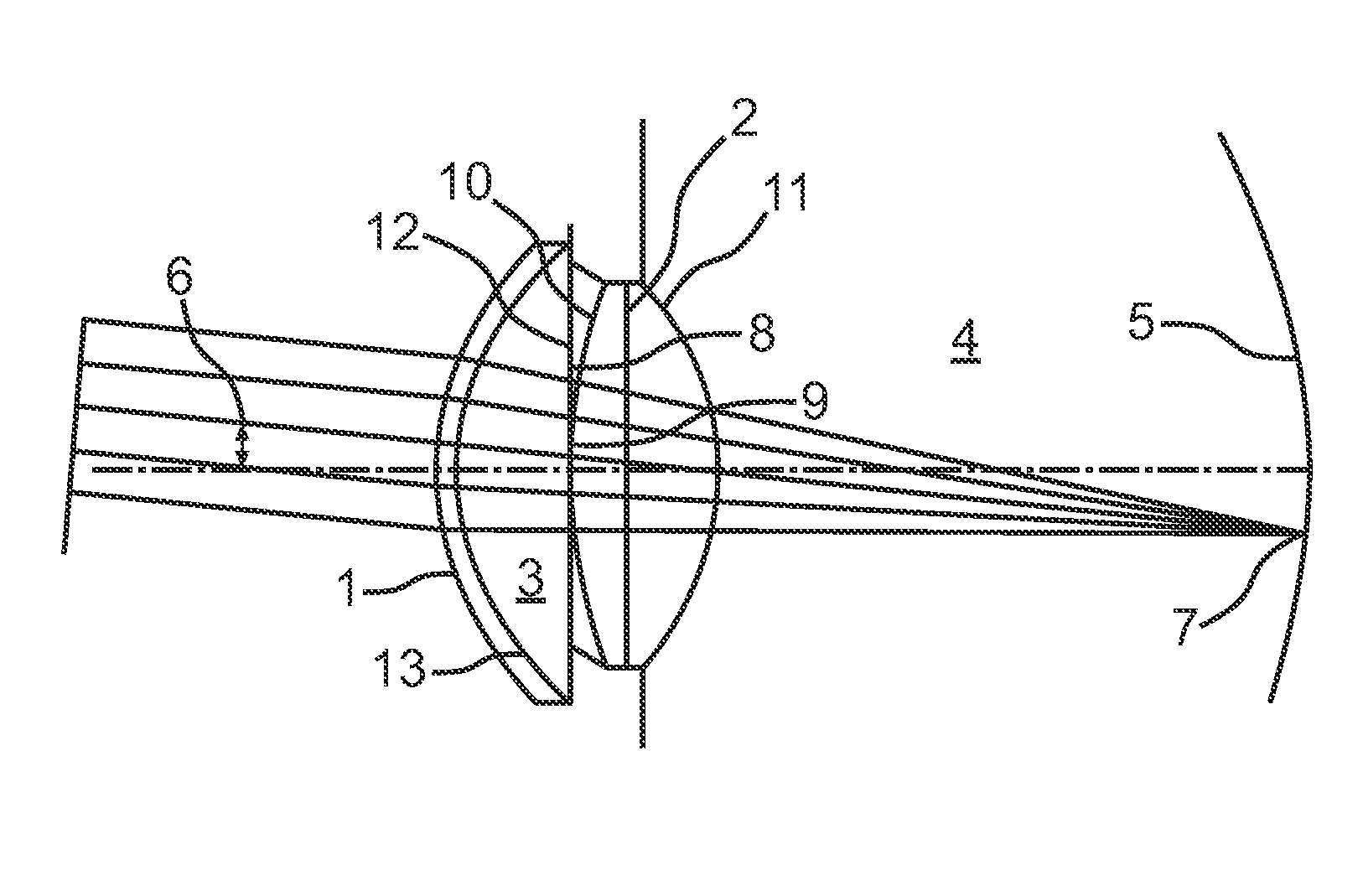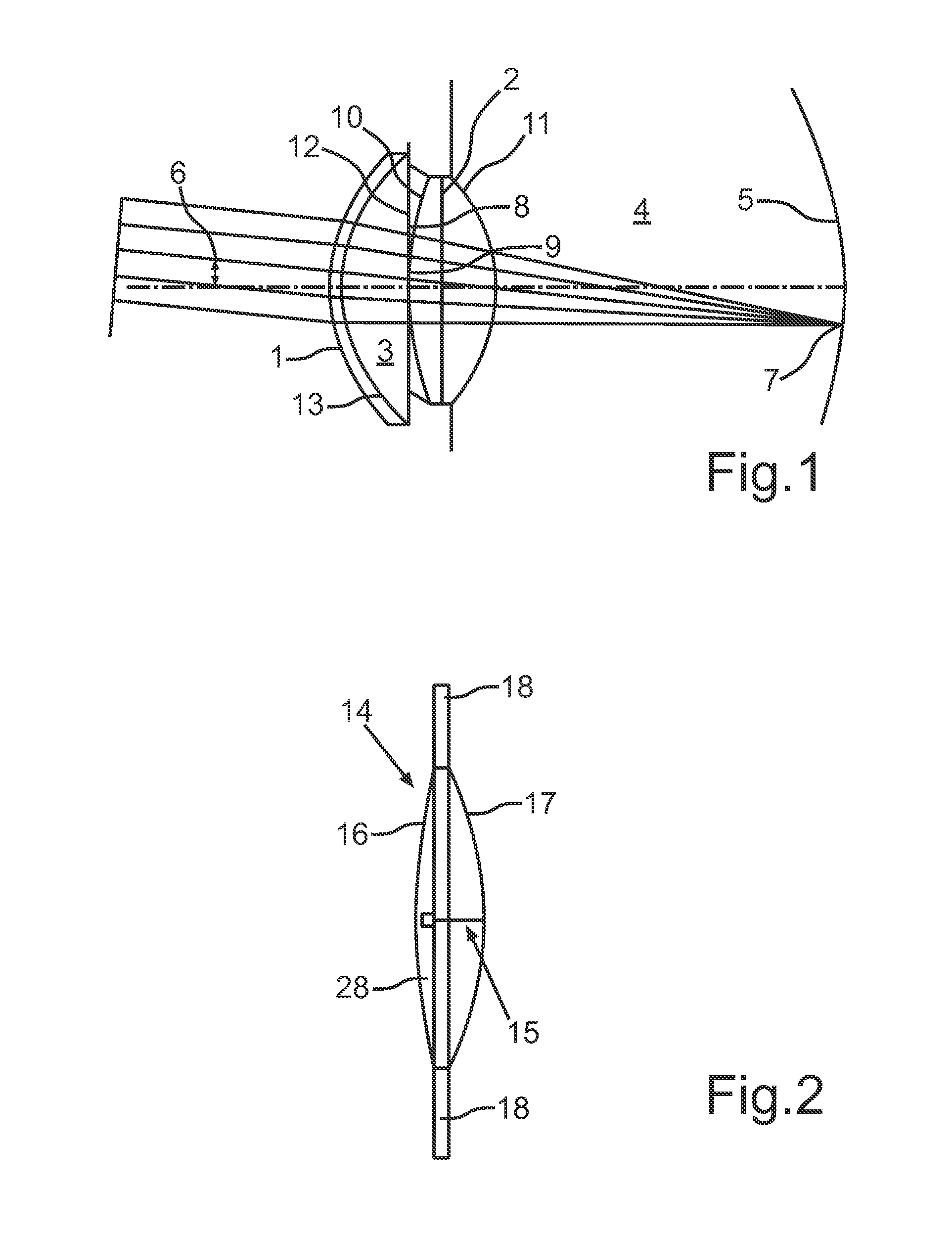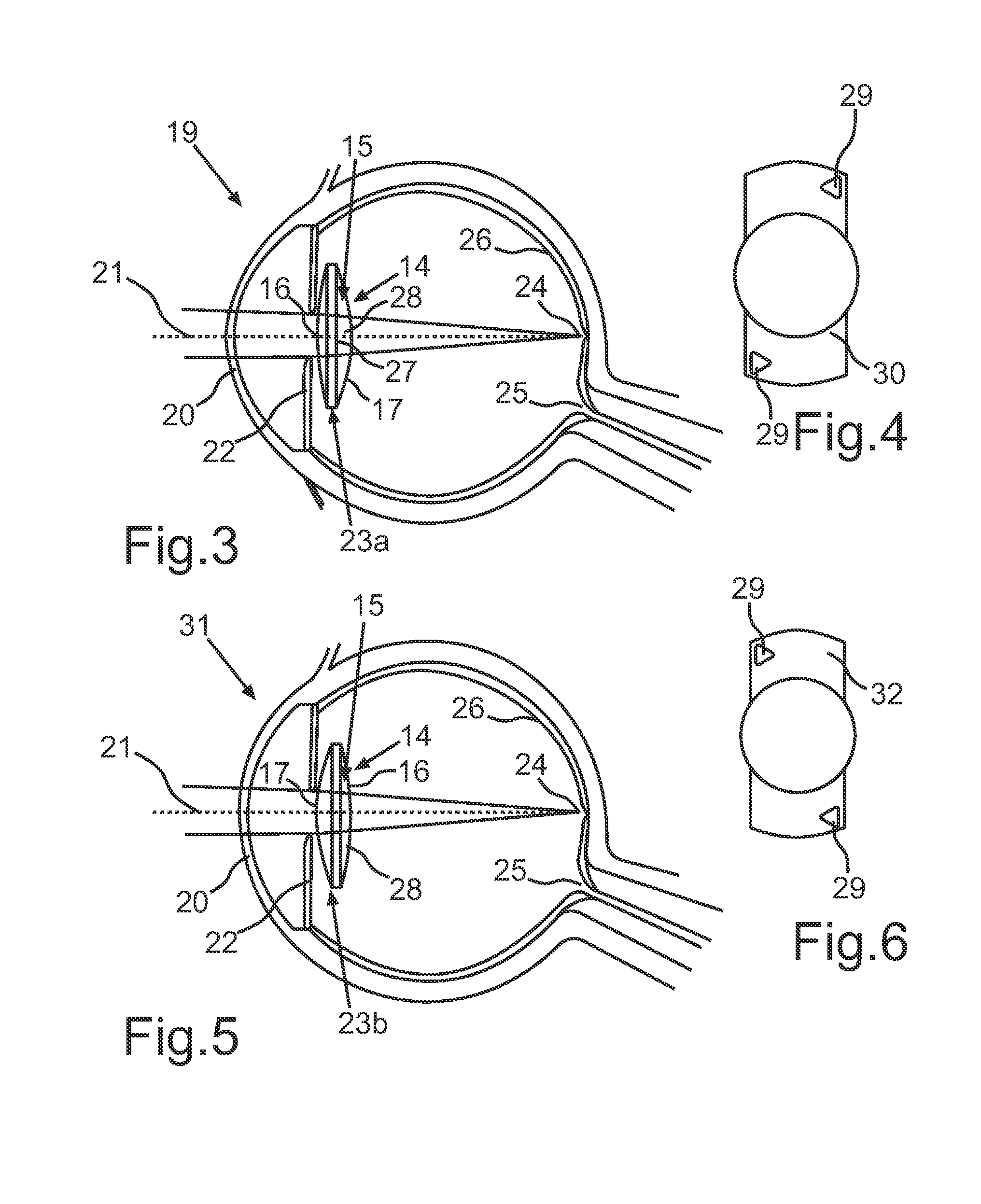Method For Modelling An Intraocular Lens And Intraocular Lens
a technology of intraocular lens and lens, which is applied in the field of modelling intraocular lens and intraocular lens, can solve the problems of affecting the focusing of light by the combined system of cornea and implanted iol, affecting the optical performance of the iol, and achieving the expected bad results
- Summary
- Abstract
- Description
- Claims
- Application Information
AI Technical Summary
Benefits of technology
Problems solved by technology
Method used
Image
Examples
Embodiment Construction
[0021]The invention relates to a method for modelling an intraocular lens that provide the human eye with reduced visual defects. The method comprises modelling the shape of at least one surface of an intraocular lens and / or modelling the interior of said intraocular lens with respect to their refraction effect in such a way that with a first orientation within a human eye the intraocular lens at least partially corrects a first visual defect of a human eye and with a second orientation within the human eye the intraocular lens at least partially corrects a second visual defect of a human eye.
[0022]Therefore a method is given, which enables a very effective and efficient modelling process. Especially with the focus on modelling in a dual way in only one designing process with respect to correcting more visual defetcs with one lens. Therefore with only one lens it is possible to correct at least two different visual defects depending on the orientation of the lens in the human eye. T...
PUM
 Login to View More
Login to View More Abstract
Description
Claims
Application Information
 Login to View More
Login to View More - R&D
- Intellectual Property
- Life Sciences
- Materials
- Tech Scout
- Unparalleled Data Quality
- Higher Quality Content
- 60% Fewer Hallucinations
Browse by: Latest US Patents, China's latest patents, Technical Efficacy Thesaurus, Application Domain, Technology Topic, Popular Technical Reports.
© 2025 PatSnap. All rights reserved.Legal|Privacy policy|Modern Slavery Act Transparency Statement|Sitemap|About US| Contact US: help@patsnap.com



